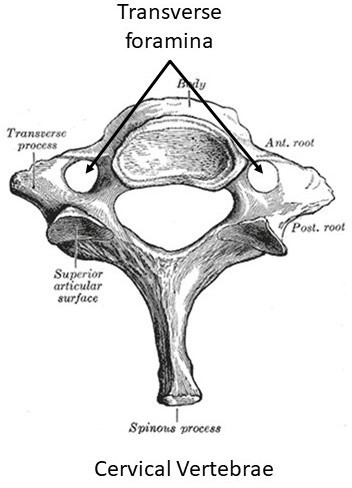What is one example of a cartilaginous joint?
Hyaline Cartilage joints in the maxilla.
None.
Fibrous Cartilage joints in the Skull.
Hyaline Cartilage joints in the ribs.
The Correct Answer is D
A cartilaginous joint is a joint where the bones are united by cartilage.
A hyaline cartilage joint is a type of cartilaginous joint where the bones are joined by hyaline cartilage.
An example of a hyaline cartilage joint is the first sternocostal joint that unites the first rib to the sternum.
Choice A is incorrect because hyaline cartilage joints are not present in the maxilla.
The maxilla is a single bone that forms the upper jaw and palate. Choice B is incorrect because none is not a valid answer.
Choice C is incorrect because fibrous cartilage joints are not present in the skull. The skull bones are joined by fibrous joints called sutures.
Nursing Test Bank
Naxlex Comprehensive Predictor Exams
Related Questions
Correct Answer is ["Ischial tuberosity"]
Explanation

The ischial tuberosity is a bony prominence located at the base of the pelvis.
It is the part of the pelvis that bears weight when sitting and is commonly referred to as the "sitting bone." The ischial tuberosity is attached to several important muscles, including the hamstrings and the adductor magnus, which play a crucial role in hip extension and thigh adduction, respectively.
The ischial tuberosity is also an important landmark for identifying the sciatic nerve, which runs in close proximity to the bone.
Injuries to the ischial tuberosity can occur as a result of prolonged sitting, direct trauma, or repetitive stress, and can cause pain and discomfort in the buttocks and hips.
Correct Answer is D
Explanation
The transverse foramina are openings in the transverse processes of the cervical vertebrae that allow the passage of the vertebral arteries and veins.
They are not found on any other vertebrae.

Choice A is incorrect because spinous processes are bony projections on the posterior aspect of all vertebrae that serve as attachment sites for muscles and ligaments.
Choice B is incorrect because transverse processes are lateral projections on all vertebrae that serve as attachment sites for muscles and ribs.
Choice C is incorrect because costal facets are articular surfaces on the thoracic vertebrae that articulate with the heads of the ribs.
They are found on all thoracic vertebrae except T11 and T123.
Whether you are a student looking to ace your exams or a practicing nurse seeking to enhance your expertise , our nursing education contents will empower you with the confidence and competence to make a difference in the lives of patients and become a respected leader in the healthcare field.
Visit Naxlex, invest in your future and unlock endless possibilities with our unparalleled nursing education contents today
Report Wrong Answer on the Current Question
Do you disagree with the answer? If yes, what is your expected answer? Explain.
Kindly be descriptive with the issue you are facing.
